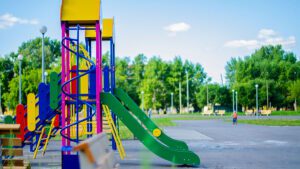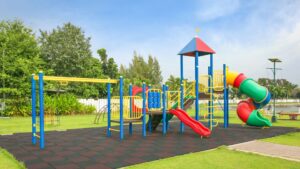Opening a trampoline park can be an exciting—and potentially lucrative—business move. But it’s also capital intensive. If you’re serious about launching a park, you need a clear budget that covers initial setup, safety and compliance, ongoing operations, and a cushion for the unexpected.
Quick summary (if you’re in a hurry)
- Typical startup range (equipment + fit-out): $233,000–$467,000 (medium park estimate)
- Insurance (annual): $5,800–$11,700 (estimate)
- Major cost drivers: building (buy vs. rent), equipment selection, site renovations, staffing, marketing, safety systems, and maintenance.
- Tip: Plan for phases—open with core attractions, then add features once cash flow stabilizes.

1. Major initial costs explained
1.1 Building: buy, rent, or build new?
- Buying gives long-term stability but requires a larger upfront outlay and potentially major renovations. Expect higher capital needs but greater control.
- Renting reduces initial capital and lets you open faster, but lease terms can constrain capacity for structural alterations (and rent can rise).
- New construction is ideal for a custom layout but takes longer (often a year or more) and costs more.
Your choice shapes many downstream costs: HVAC, ceiling height requirements, structural supports for tall attractions, and parking.
1.2 Equipment & attractions (big-ticket items)
Modern trampoline parks are multi-activity centers. Typical attractions include:
- Open-jump trampoline bays
- Tumbling lanes
- Foam pits and airbags
- Dodgeball courts
- Slam-dunk/trampoline basketball
- Ninja-style obstacle courses
- Interactive and AR features
Average equipment budget for a medium-sized park was estimated at $200k–$400k. That range depends on the number and variety of attractions, customization, and brand-new vs. used equipment.
1.3 Layout, safety, and structural work
Don’t skimp on:
- Flooring and impact padding
- Fire exits, sprinklers, smoke detectors
- Sturdy structural supports and anchors
- Lighting, sound, and ventilation
- ADA access and restroom facilities
These build-out costs vary greatly by the condition of your chosen building but can often rival equipment costs in older properties.

2. Operating costs you must budget for
2.1 Staff
A trampoline park is staff-intensive. Roles include:
- Front desk/reception
- Trampoline attendants/supervisors (safety staff)
- Food & beverage staff (if applicable)
- Event coordinators (parties, corporate bookings)
- Cleaners and maintenance technicians
- Manager and assistant managers
Rule of thumb: have at least one trained supervisor for every ~30 players. If your park operates long hours (70+ hrs/week), expect to staff two full teams.
2.2 Maintenance & parts
Equipment needs constant attention: replacement padding, springs, mats, and hardware. Preventive maintenance reduces downtime but costs money. Plan an annual maintenance budget and track replacement cycles for high-wear items.
2.3 Marketing & customer acquisition
Allocate a meaningful marketing budget for:
- Local digital ads (Google/FB/Instagram)
- Events and school partnerships
- PR and community outreach
- Seasonal promotions
A strong opening-phase marketing plan is essential to accelerate word-of-mouth and generate early bookings for parties and groups.
2.4 Insurance and risk management
Insurance is non-negotiable. The original estimate of $5,000–$10,000 per year annually. This covers building/property risks and liability insurance. Actual premiums depend on location, claims history, safety measures, and coverage limits.
Invest in staff training and documented safety systems—insurers reward lower-risk operators with better rates.

3. Financing strategies
3.1 Common funding routes
- Bank loans / commercial lending: traditional option; compare interest rates and repayment terms.
- Equity investors: an investor can inject capital in exchange for ownership, but expect governance changes and exit expectations.
- Grants: rare for entertainment, but some local economic-development grants or small-business funds may apply.
- Vendor financing/lease-to-own: sometimes equipment manufacturers offer financing options.
3.2 Budget tips
- Phased rollout: open with core attractions and add specialized features later.
- Conservative revenue projections: don’t overestimate attendance—build your cash plan on realistic numbers.
- Reserve fund: keep a contingency (10–20% of initial capex) for unexpected cost overruns.

4. Layout & guest experience considerations
4.1 Flow & visibility
Design clear sightlines so supervisors and parents can monitor activity easily. Separate high-energy zones (dodgeball, ninja courses) from toddler and family areas.
4.2 Party & events spaces
Birthday parties and group events are revenue drivers—design dedicated party rooms for efficient turnaround and upsells.
4.3 Food & beverage
Add a simple café or snack bar for dwell-time revenue. Consider leasing to a partner if food service isn’t your core competency.
4.4 Accessibility & inclusivity
Ensure ADA compliance and consider sensory-friendly sessions for neurodiverse visitors.

5. Safety & compliance: non-negotiables
- Comply with local building codes and any industry safety standards.
- Implement written safety rules, signage, and staff-led orientation briefings.
- Keep daily checklists and maintenance logs.
- Offer first-aid kits, AEDs, and trained staff on-site.
Strong safety systems reduce liability and increase customer trust—both crucial to long-term success.

6. Revenue streams and profit levers
- General admission & hourly jump fees
- Birthday parties & group bookings
- Memberships and season passes
- Merchandise & concessions
- Corporate events and team-building packages
- After-hours special events (fitness classes, trampoline leagues)
Maximize per-visitor spend with add-ons (socks, lockers, photo packages).

7. Practical advice from operators
- Do a deep market study: demographics, competition, school calendars, and local pricing sensitivity.
- Choose location wisely: accessibility and parking matter as much as rent.
- Prioritize safety: a single safety incident can damage reputation.
- Hire and train well: quality staff keep guests safe and returning.
- Start lean and expand: validate your concept, then scale.
A trampoline park can be both a joyful community hub and a profitable business—but only with thorough planning. Plan realistically for initial capital (expect ≈ $233k–$467k for a medium facility), factor in annual insurance (≈ $5.8k–$11.7k), and prioritize safety and marketing from day one. With smart financing, a phased rollout, and strong operations, you can build a sustainable, fun attraction that keeps customers coming back.




